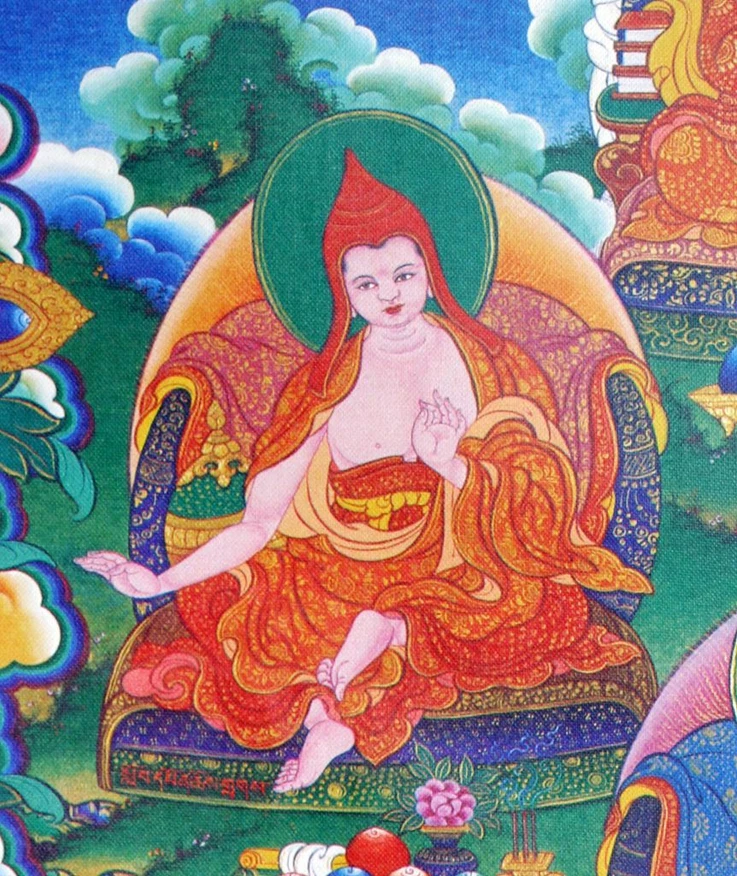Mind-Body duality is a complicated topic in Buddhism. The Buddhist position could perhaps be best described as a middle way approach of ‘neither-duality-nor-identity’.
This is a very basic explanation of Dualism. Dualism is a perception that something — or everything, including reality itself can be sorted into two fundamental and irreducible categories. In Western philosophy dualism most often refers to the view that phenomena are either mental or physical.
Non-dualism in Mahayana Buddhism
Mahayana Buddhism is one of the main existing branches of Buddhism and the Sanskrit word “Mahayana” means great vehicle.
See The goal of Mahayana Buddhism
See Main books of Mahayana Buddhism
Buddhism proposes that all phenomena are interconnected and inseparable. All phenomena exist in perpetual conditioning all other phenomena.
Things are the way they are because everything else is the way it is.
The main teaching of Mahayana Buddhism is sunyata or emptiness which means all phenomena (including ourselves) also are empty of self-essence or inherent existence. All distinctions we make between this and that are arbitrary and exist only in our thoughts. This doesn’t mean that nothing exists. It means that there is no concrete findable person or entity to describe who we are. As well as all objects do not have concrete findable essence.
If everything is interdependent and inseparable, how do we count the myriad phenomena? And does that mean everything is One?
Mahayana Buddhism often comes across as a form of monism or the teaching that all phenomena are of one substance or are one phenomenon in principle. But Nagarjuna said that phenomena are neither one nor many. The correct answer to “how many?” is “not two.”
The most harmful dualism is that of the subjective “knower” and an object of knowing. Or, in other words, the perception of “I/my/myself” and “everything else.”
What is freedom from dualism? It is the absence of involvement with either the external or the internal. When the dualism of subjective “knower” and object of “knowing” does not arise, what remains is a pure being or pure awareness.
— the Vimalakirti Sutra
Dharmakirti’s view

However, there are some contradictions between non-dualism and Buddhism. In this article, we will try to cover different points of view on mind-body dualism among Buddhist scholars.
Since Buddhism acknowledges a mind-body distinction only on a conventional level, it would not be fair to claim that the tradition necessarily advocates mind-body dualism.
Mind-body dualism is an approach according to which the mind is separate from the body and can thus be related presently with one physical body and in the future with another.
According to Dharmakirti – an influential Indian Buddhist philosopher who worked at Nalanda, commitment to a version of mind-body dualism is necessary for Buddhism because the majority of Buddhist doctrines that presuppose rebirth would be mostly incoherent.
The mind and body are separate entities, of which the mind or consciousness is the same surviving or persistent entity, and the body in which it resides continually undergoes changes.
The consciousness (mind) survives the death of the physical body whereas the body naturally doesn’t survive its death.
According to Buddhism, the mind and the body are unified, with consciousness (inner subjective awareness) being primary. As per Mahayana Buddhism, the body is viewed “as the densest layer of a spectrum of being that ranges in quality from the dense (body) to the subtle (mind) to the very subtle (pure awareness without thought).”
According to Zen Buddhism, this very subtle quality of consciousness is believed to be the essential quality of all things, including the body, and is therefore termed “Big Mind.” Interestingly, this view claims that because “Big Mind permeates virtually all things, there can be no actual duality between mind and body.” That is, the mind and body differ only superficially in quality.
Additionally, an important point to mention is that though consciousness is seen as primary as per Buddhism, it is not the “first cause.” In other words, consciousness does not cause anything, because such a view would imply that there exists a duality between consciousness and that which is caused by consciousness, a violation of the core ideal of Buddhist philosophy that in the reality of things, there is no fundamental duality between a subject and an object.




